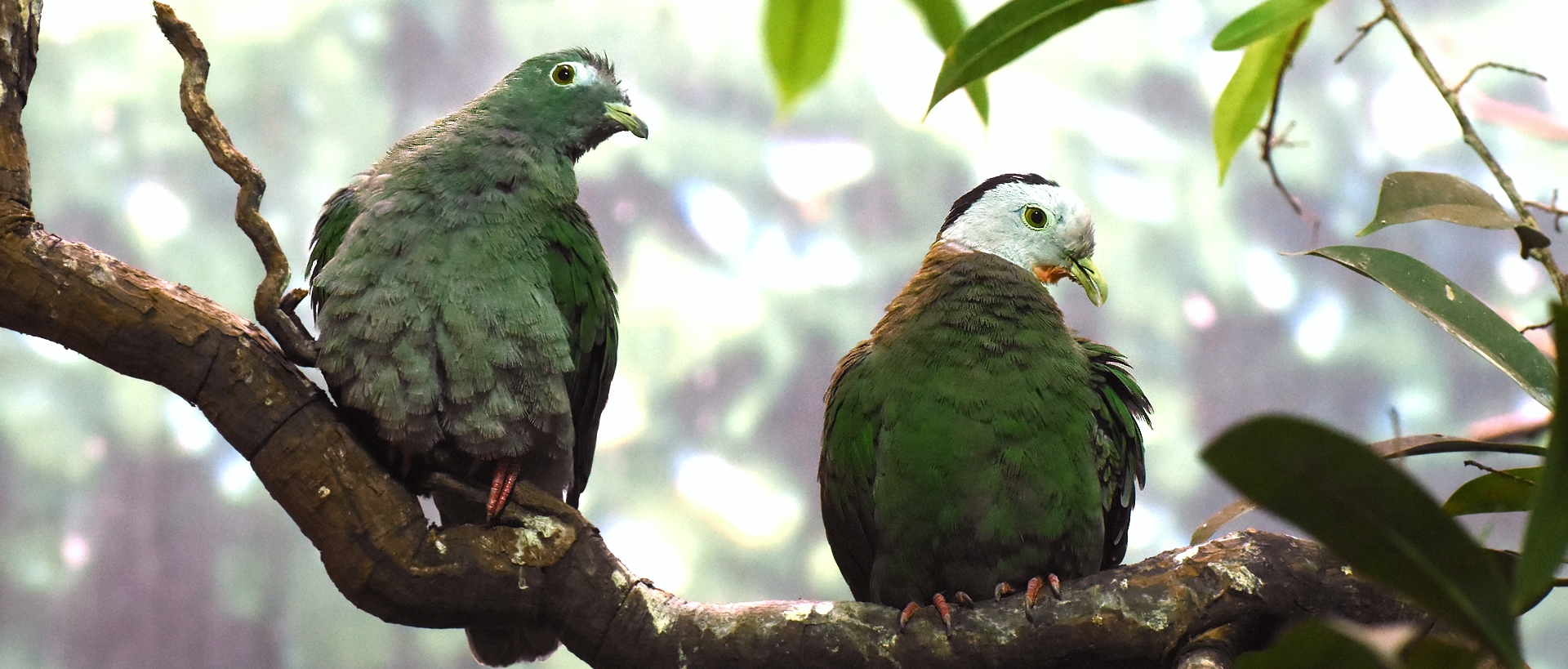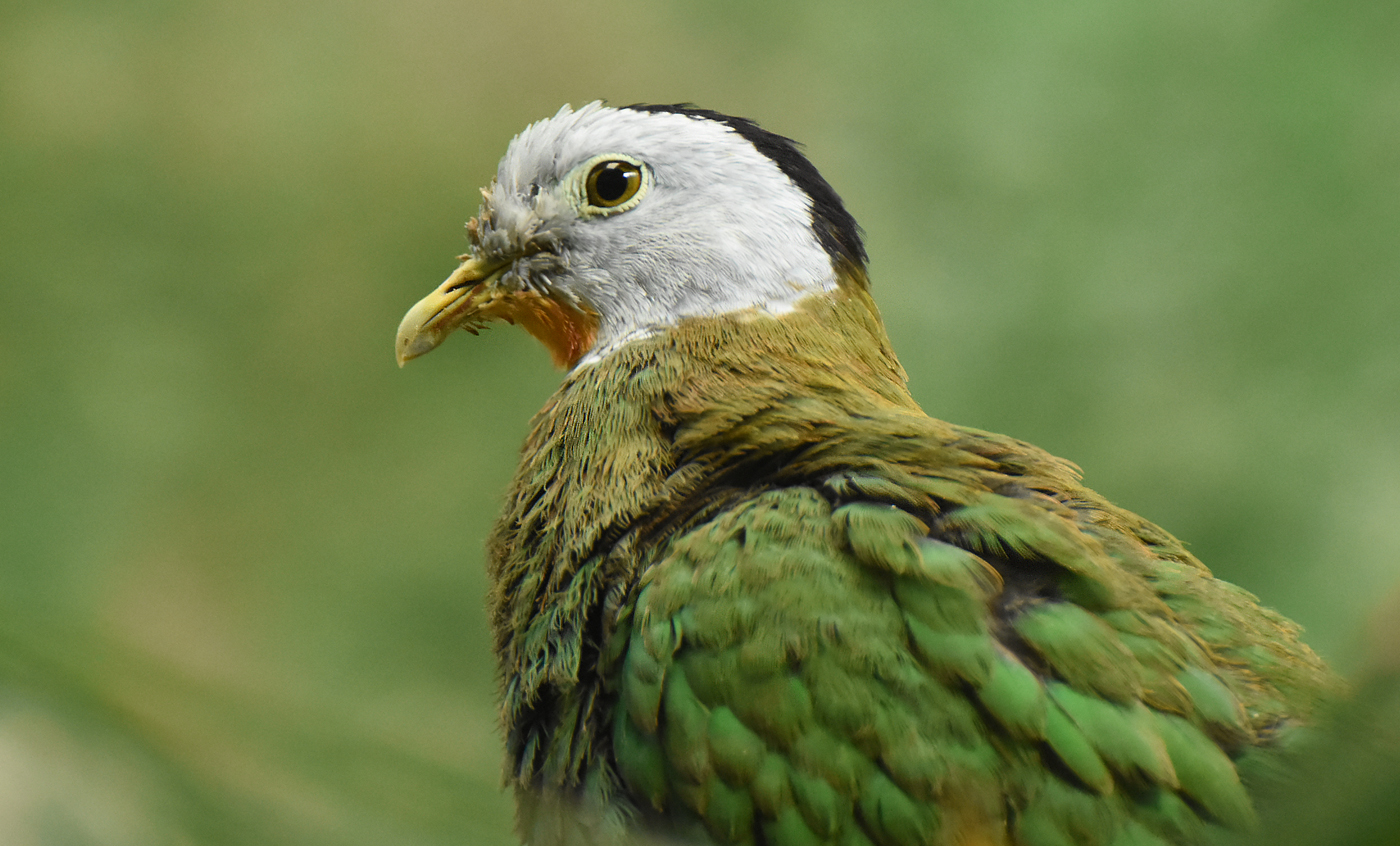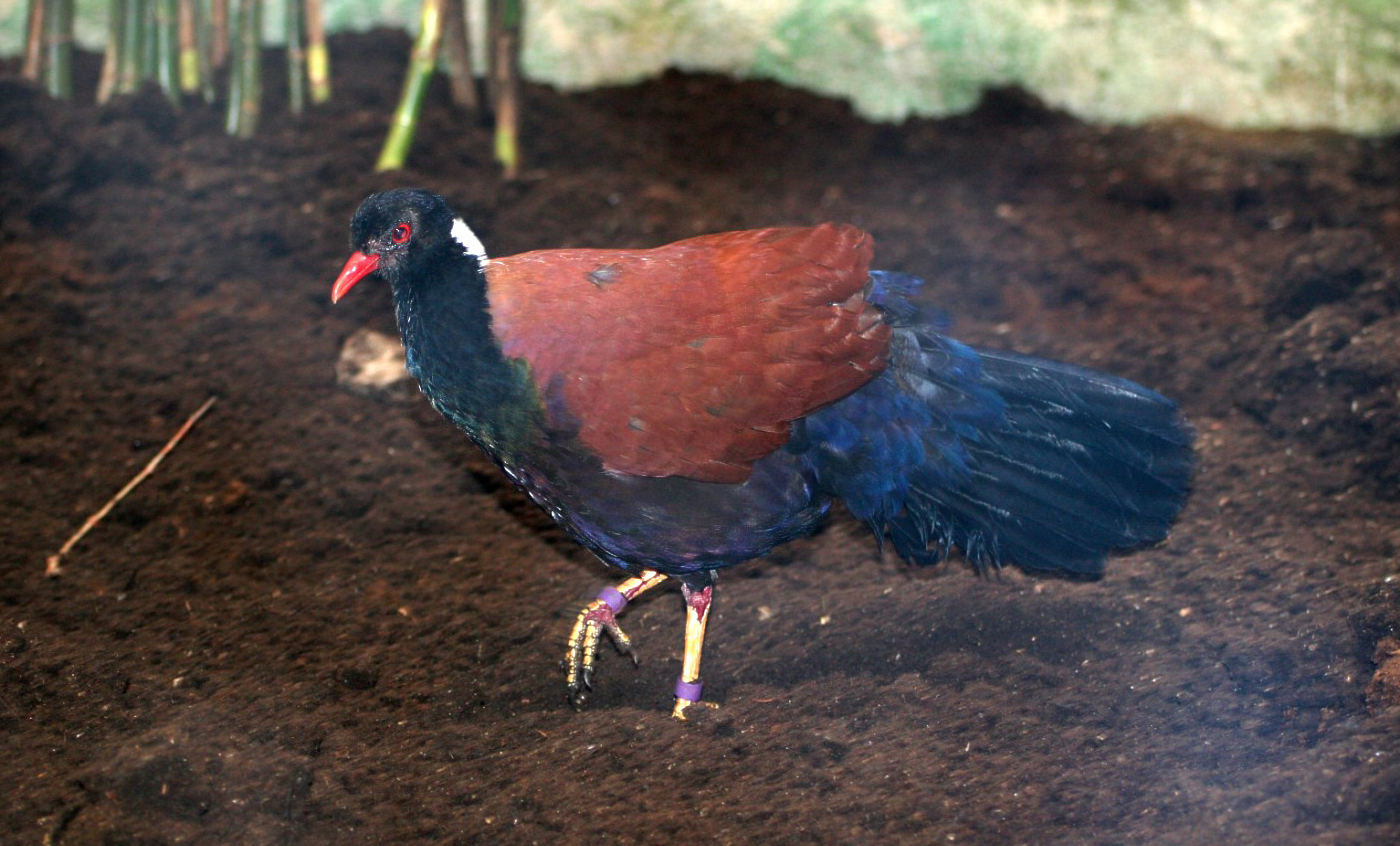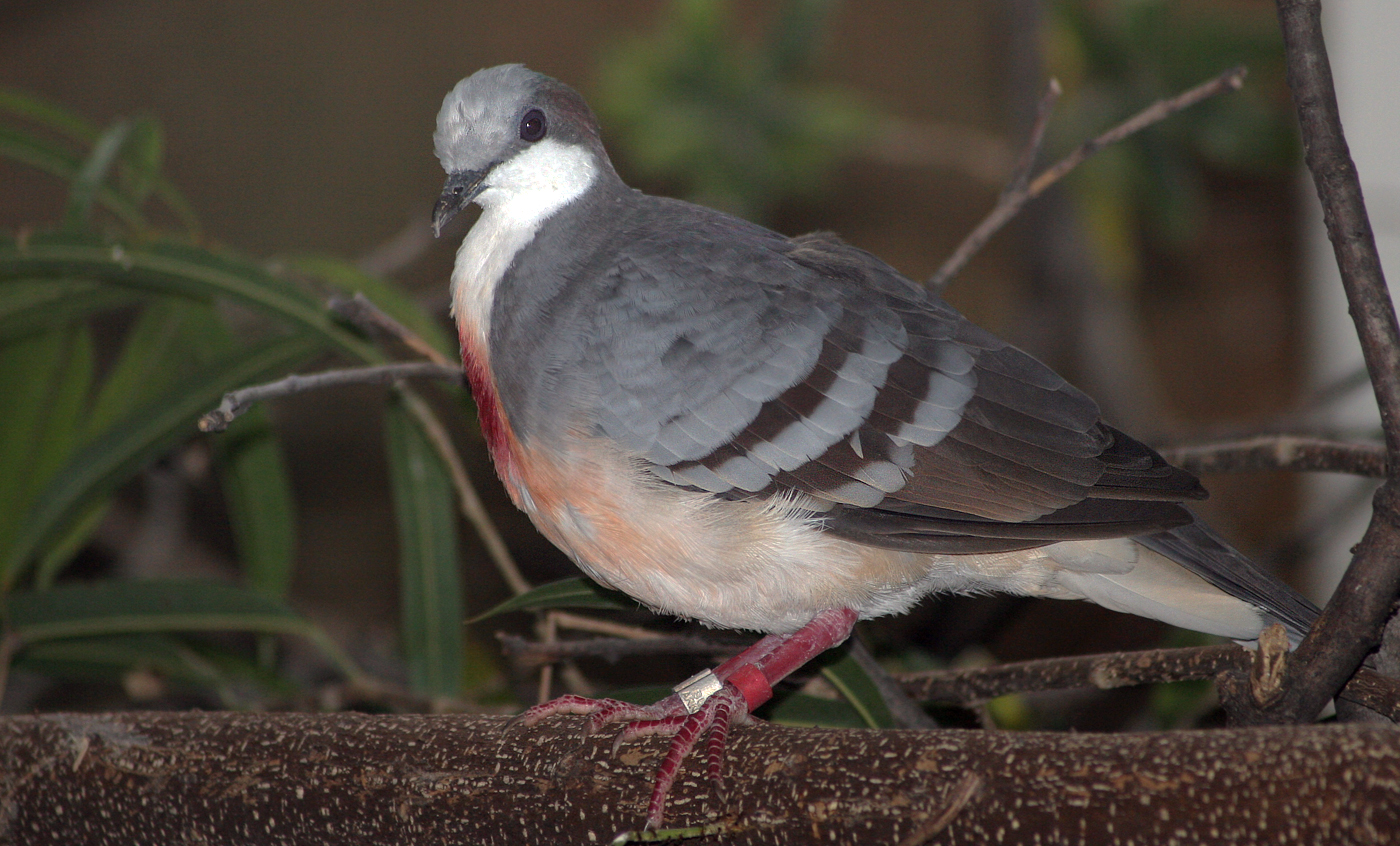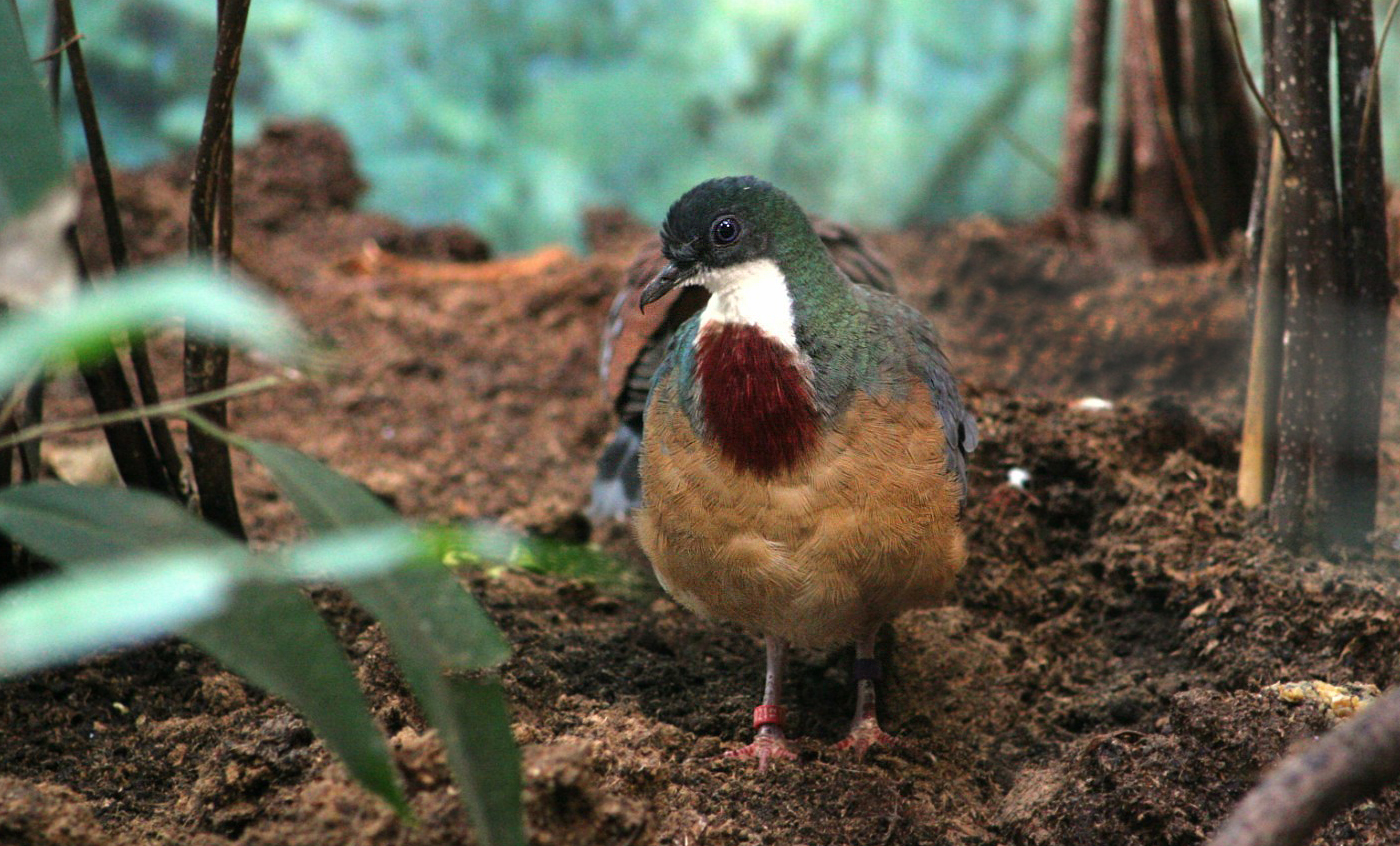Black-naped fruit dove
The fruit dove is a small forest bird with a very definite sexual dimorphism: the female has green plumage, while the male has a green body, the lower part of the tail is yellow, orange and red, and its head and neck are greyish, with a black nape. A herbivore, it feeds on fruit, young shoots, berries and seeds.
Breeding program
Natural habit
Indonesia y Filipinas
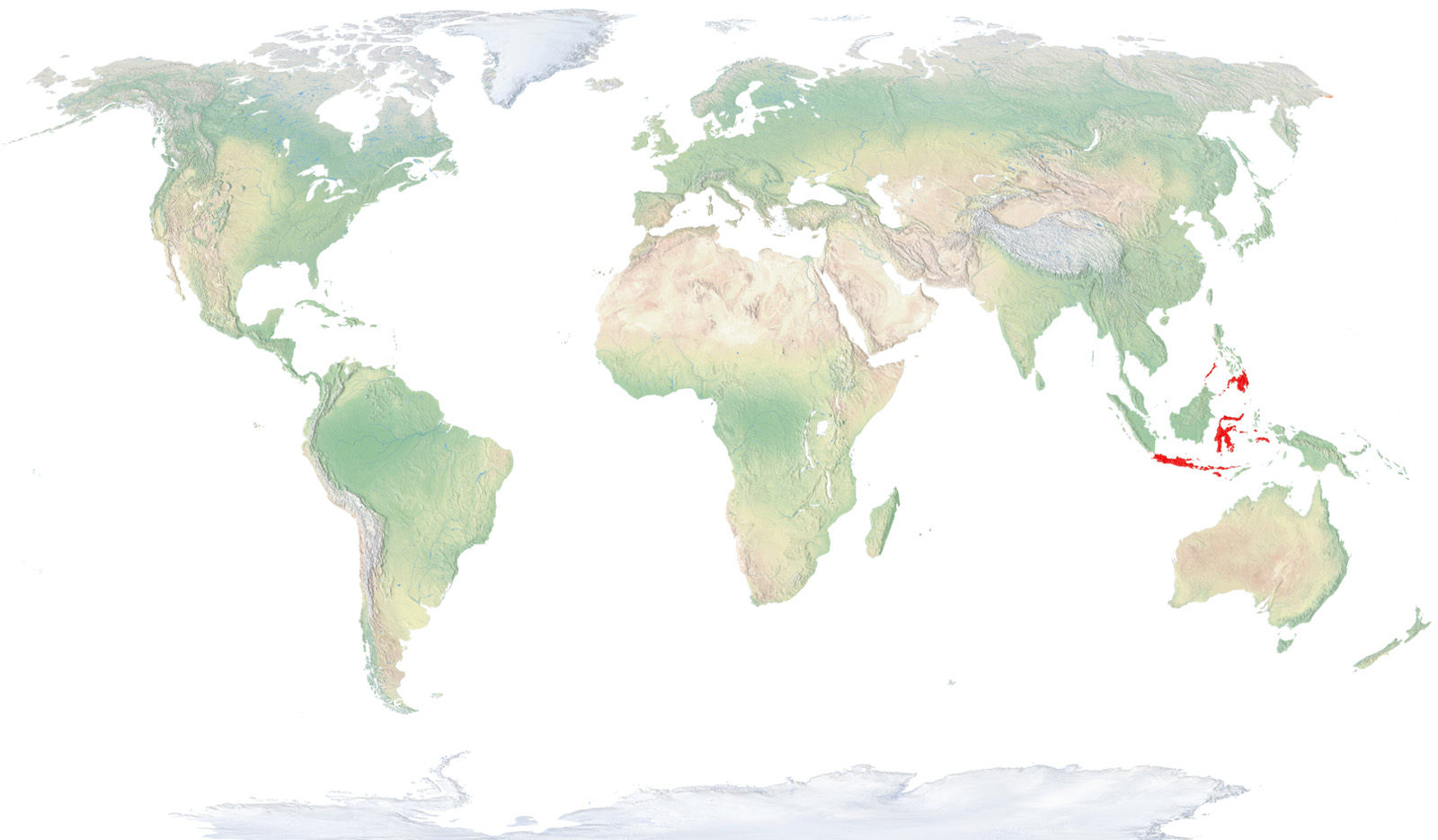
- Distribution / Resident
- Breeding
- Wintering
- Subspecies
Risk level
- Extint
- Extint in the wild
- Critically endangered
- In Danger
- Vulnerable
- Near threatened
- Minor concern
- Insufficient data
- Not evaluated
Taxonomy
Physical characteristics
Biology
Reproduction
Biology
The black-naped fruit dove is a small forest dove with marked sexual dimorphism, as the female’s plumage is entirely green, while the male has a green body, with the bottom of the tail yellow, orange or red, greyish white head and neck, and—naturally—a black nape.
They mainly inhabit the rainforests and more open forests of the south Philippines and other Southeast Asian islands, including Sulawesi (the former Celebes Islands), Java, Bali and Maluku. They can be found in these regions both at sea level and in mountains over 1000 metres high. Very adaptable, they also often frequent croplands and the parks and gardens outside of cities.
Herbivorous, they feed on fruits, tender shoots, berries and seeds that they eat on the high branches of trees.
The nest is a simple platform made with twigs that they normally build in the branches of trees close to the ground. They tend to lay a single egg, which is incubated from 18 to 26 days.
Despite being considered eminently sedentary, recent studies reveal that the species can behave nomadically, changing islands quite often and taking off on long trips over the sea.
This species is still common in many regions of its area of distribution.



